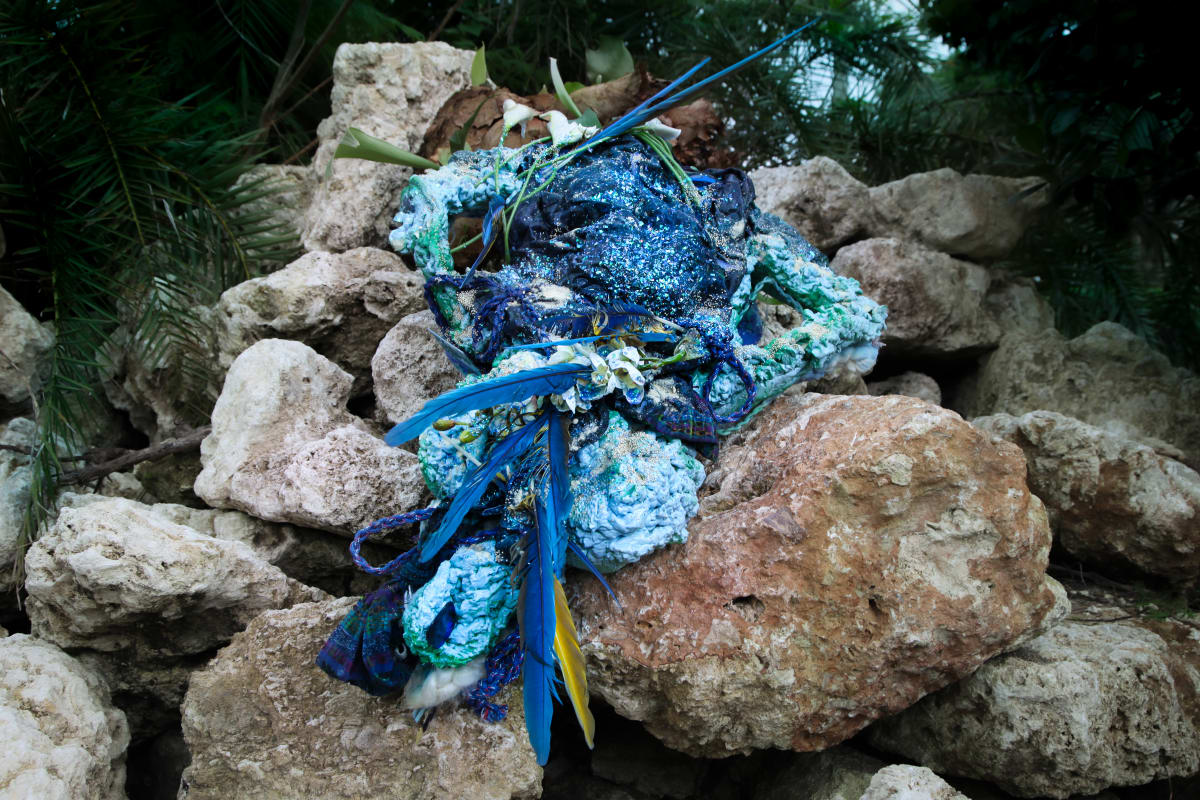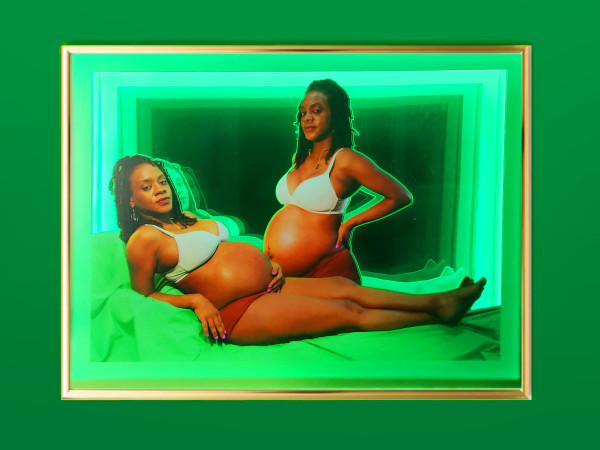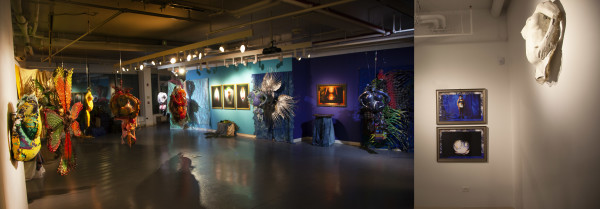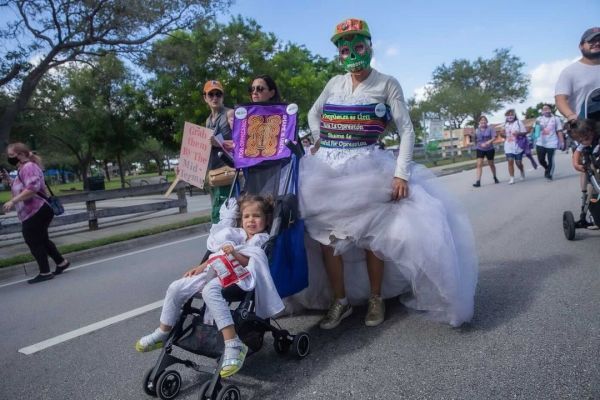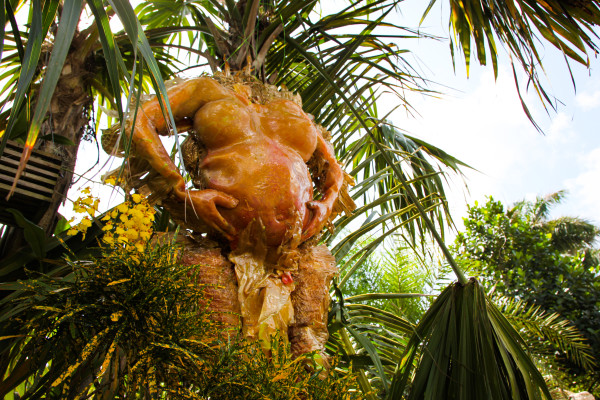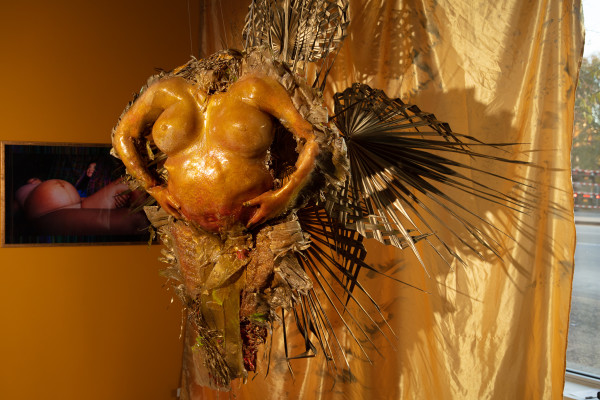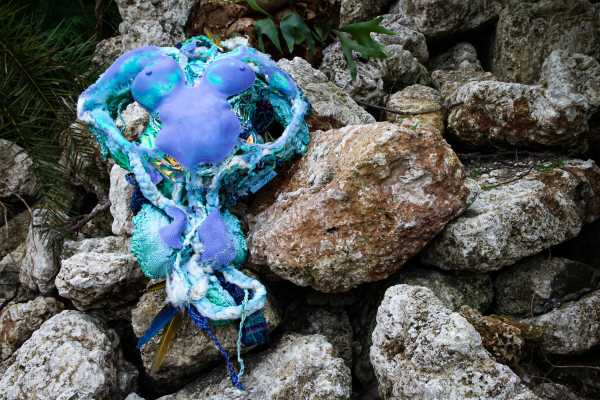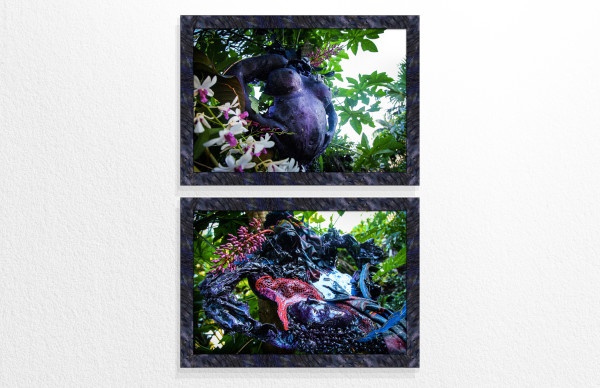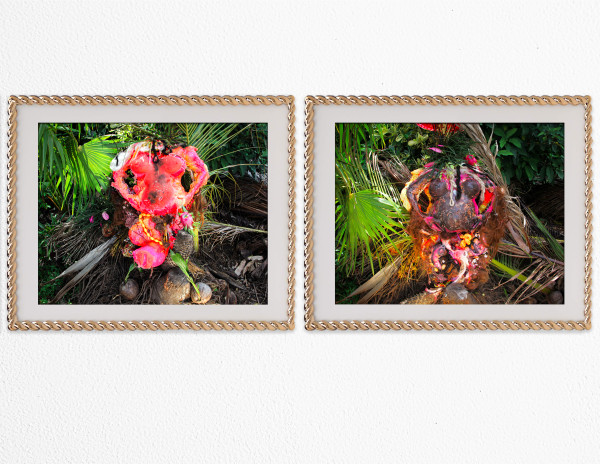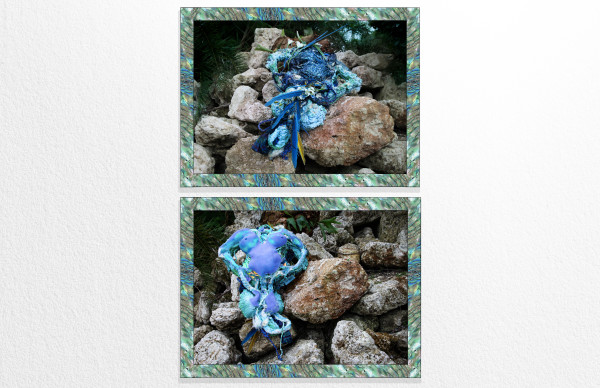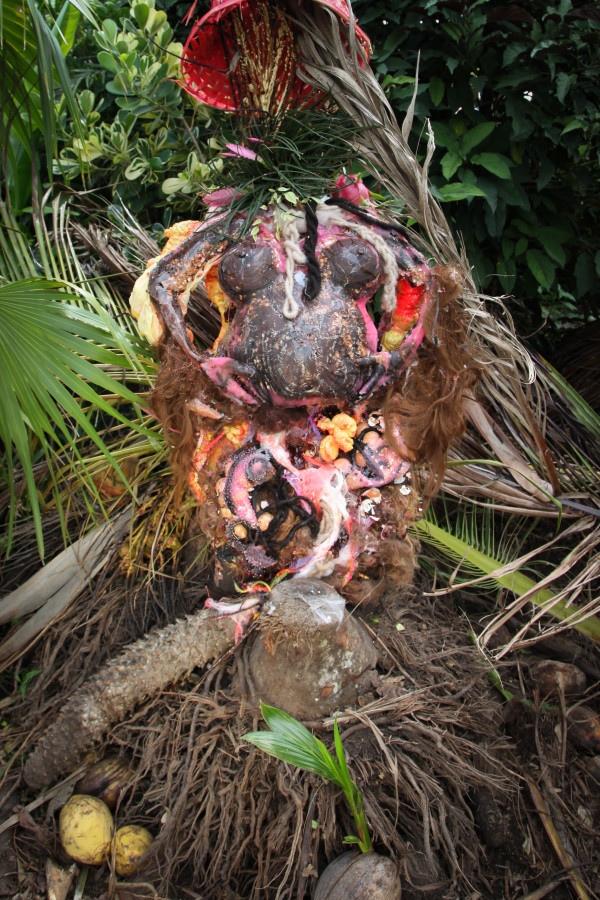A turquoise and cerulean figure ascends, washed up amidst excavated coralina stone composing the bedrock of the Caribbean. A syncretic pieta between an exotic, synthetic mother and her endemic habitat, the maternal materiality of nature conditions the figure's return to their extant, endemic landscape. The natural and man made materials composed along with the title- refer to the translation between gendered geographies and spiritual traditions of Caribbean cultures surviving the Bermuda Triangle's disappearance.
Recalling liberation mythology retablos found in tropical terrains, the work considers the culture of procreation in the Americas- a complicated historical, political, and geographic context wherein conquering the wild landscape, reproductive bodies, and indigenous societies stem from a colonial Eurocentric legacy. Inhabiting its endemic environment, the fertility votive is made by combining intimate ephemera and environmental waste cast into a slurry of domestic construction materials. Emboldened by its tropical habitat, a pregnant effigy figure emerges to embody our collective refuse as a site for procreative refuge. Monuments to the fertile survivors of man-made and natural disasters, the Mother Mold effigy figures bear the burdens of internalized structural violence made in and of our bodies, our landscape and our movement.
The Mother Mold monument is composed of intimate waste, environmental ephemera cast in domestic construction materials including: Guatemalan serape fabric, alpaca & llama quipus, braided bamboo fiber, cotton balls, nylon rope, iridescent film, Cuban “colonia” perfume bottle, turquoise powder, salt, coconut powder, white quinoa, birth control bill cases, vintage abortion pill case, cast jack fruit, building stud, plaster, floor resin, wall insulation foam, interior latex house paint, tropical flowers, plastic funerary plants are raw, processed and discarded materials.
- Created: September 03, 2021
- Collections: Linea Negra photographs

